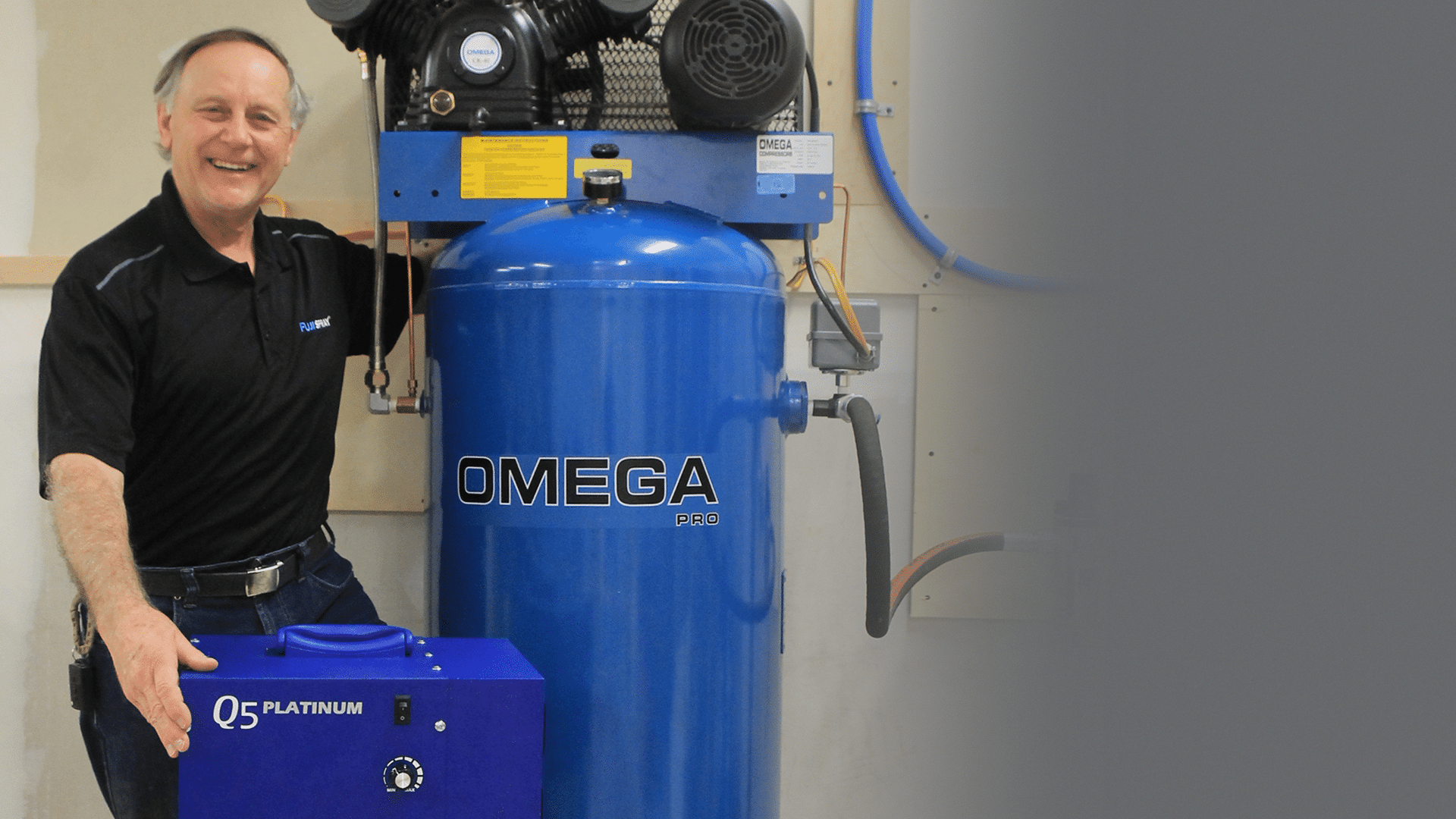
Turbine and Air Compressor Maintenance
Introduction
Today’s well engineered and manufactured turbines and air compressors are so reliable and capable of operating with a minimum of attention that we tend to forget about them. That is, until they break down, causing work interruptions and costly repairs.
So here’s my tips and tricks to help you keep such problems to a minimum.
Turbines
Maintaining your turbine properly requires little more than ensuring it’s able to draw in clean air and efficiently send it along its way. That translates to two things: placement and filters.
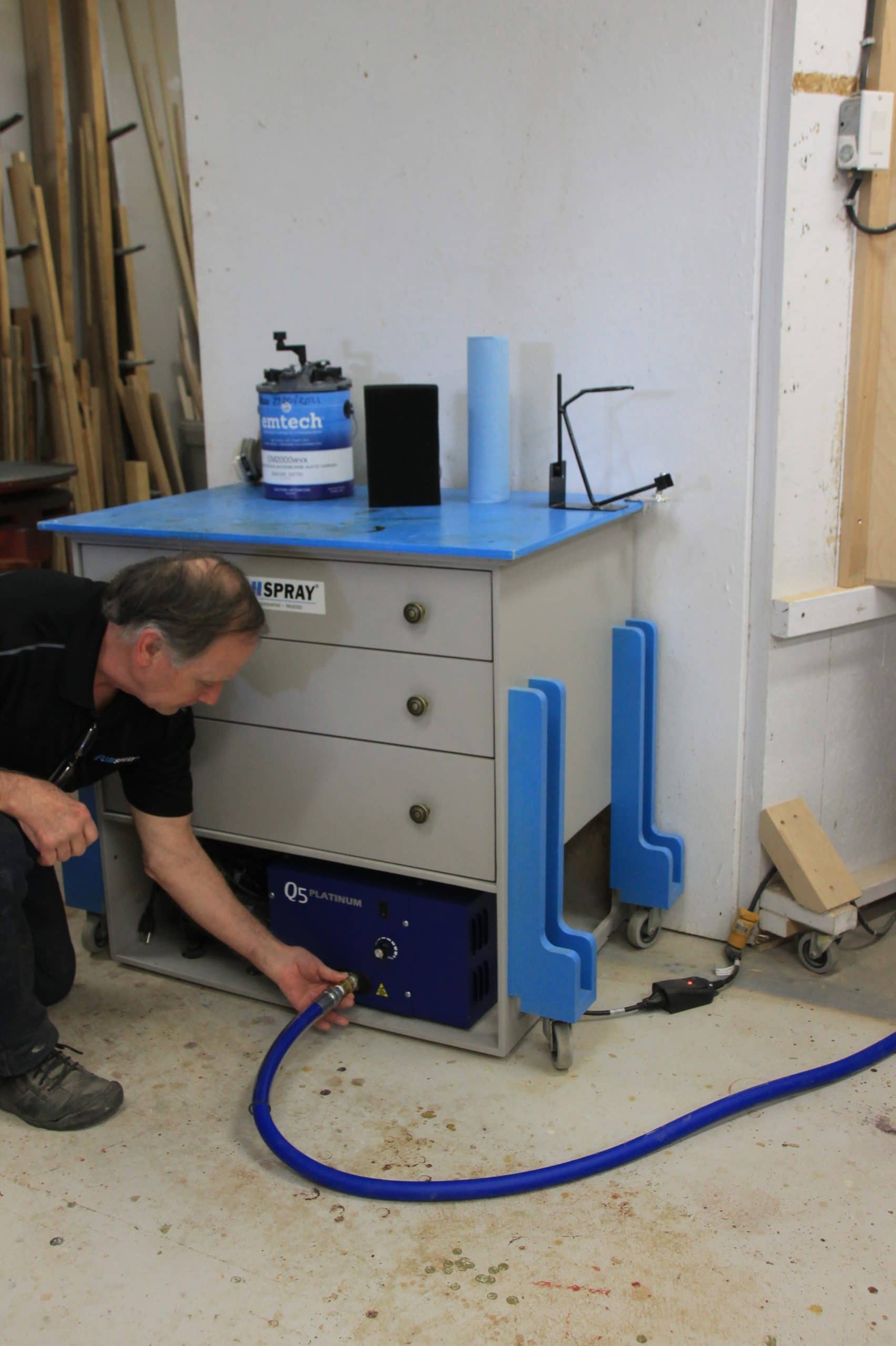
The author keeps his turbine in the bottom shelf of his shop-built mobile cart at all times.
Placement
When operating, ensure your turbine is placed well away from any overspray and dust. This will help keep its filters clean and therefore able to draw in fresh air.
And when you’re finished using it, store it out of the way where it won’t be subjected to freezing temperatures and dust.
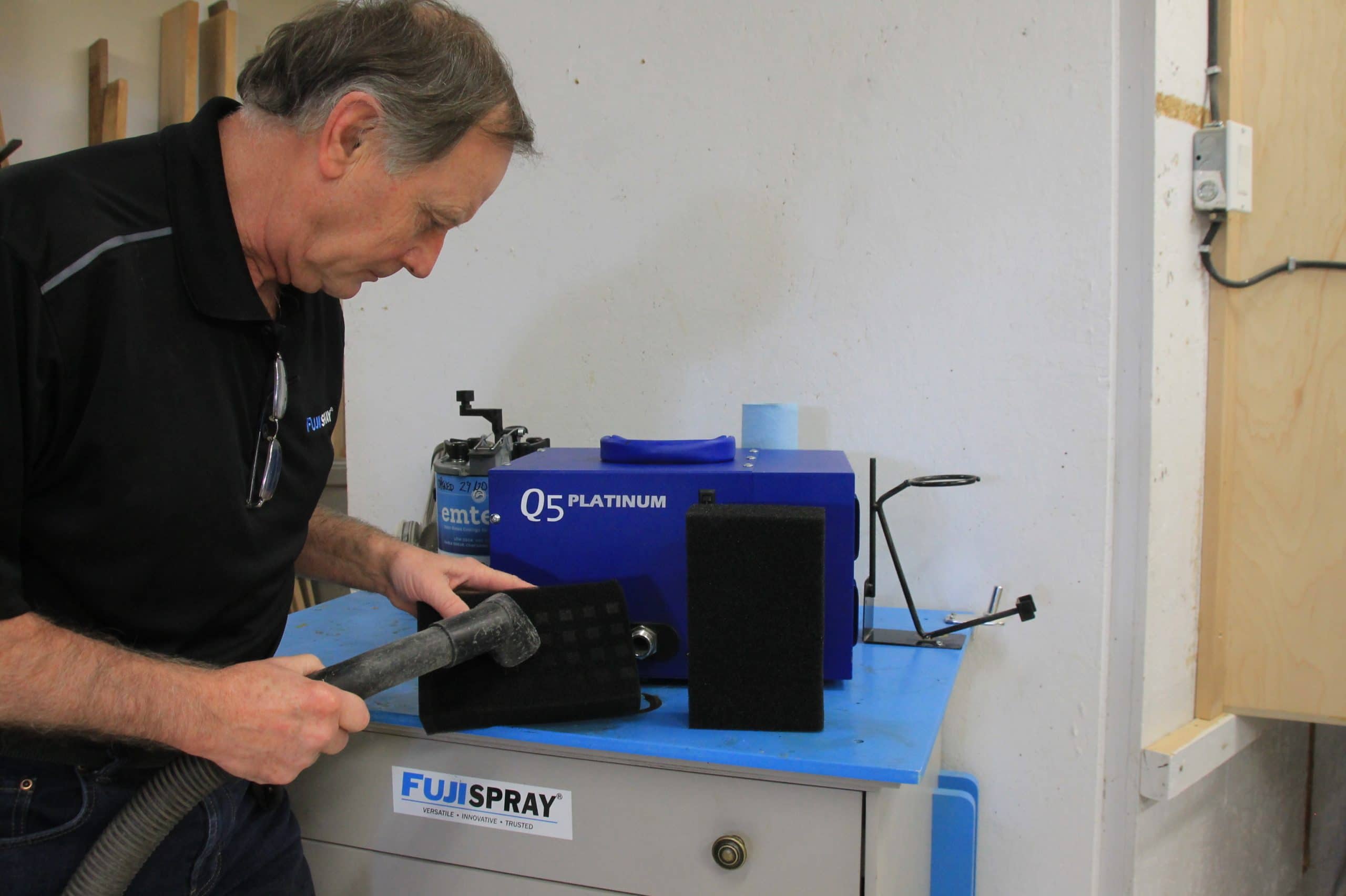
The dirty filter (L) gets vacuumed off.
Filters
Every model of turbine is unique when it comes to the number and shape of its filters, so refer to your manual to learn all about yours. And if you haven’t already done so, go ahead and order a spare set.
Get into the practice of checking the filter(s) at the end of the day. Vacuum the outside of the filter housing before pulling filters out to check on them. Then vacuum off the filter(s) themselves – never use compressed air to blow them off as it tends to drive the dust and contaminants into the filter membrane.
If vacuuming doesn’t get them clean, a quick wash in warm soapy water followed by a thorough rinse in clean water will do the trick. Vacuum, then wipe off the inside of your filter housing with a water dampened cloth, then dry it thoroughly before inserting your spare filter… or the one you’ve cleaned and left to dry fully.
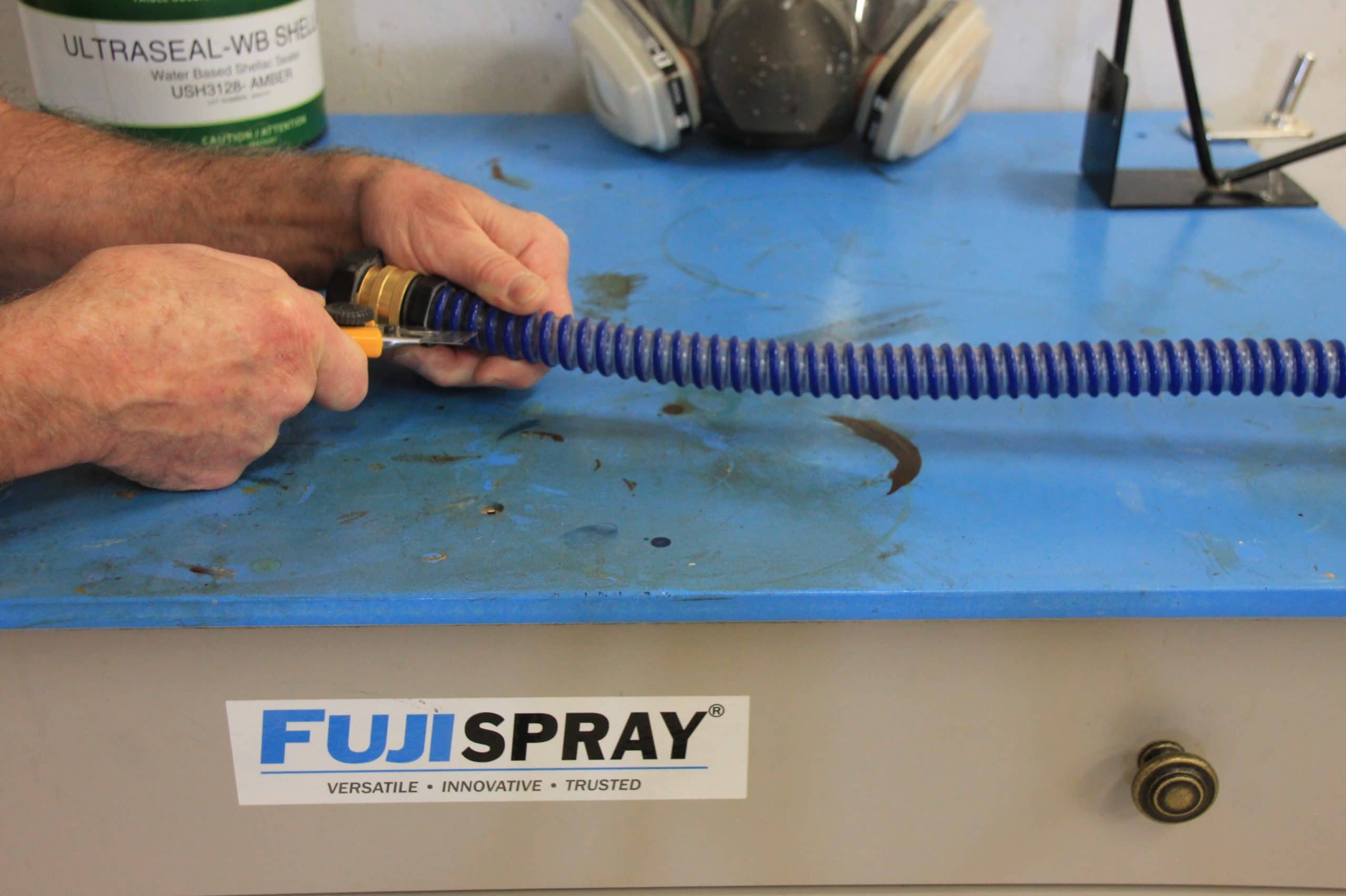
Cut away the split end of the flex hose.
Air Delivery – the Job of Hoses
Hoses require very little attention. Ensure the hose is positioned to keep it from kinking and only hand-tightened to your turbine. If you have one, check that the flex hose connections are tight.
If the flex hose develops cracks at the spray gun end due to flexing (that’s its job!), repair it yourself. With a box knife, carefully cut off the split section then screw the fitting back into the now slightly shorter flex hose.
Check hoses every week or so for leaks and if necessary, replace washers, and hand tighten the connections.
That’s all there is to Turbine System Maintenance. Together, these efforts will allow your system to efficiently deliver the necessary volume and pressure of clean air to your spray gun.
Air Compressors
As alluded to at the beginning of this article, air compressors require more maintenance than turbines.
1. Read your Operating Instructions Manual. Understand the initial start-up procedures, preventive maintenance instructions and trouble shooting guidance it provides.
2. Conduct Initial Start-up Procedures to break-in your new pump.
3. Schedule and Undertake Preventive Maintenance Checks.
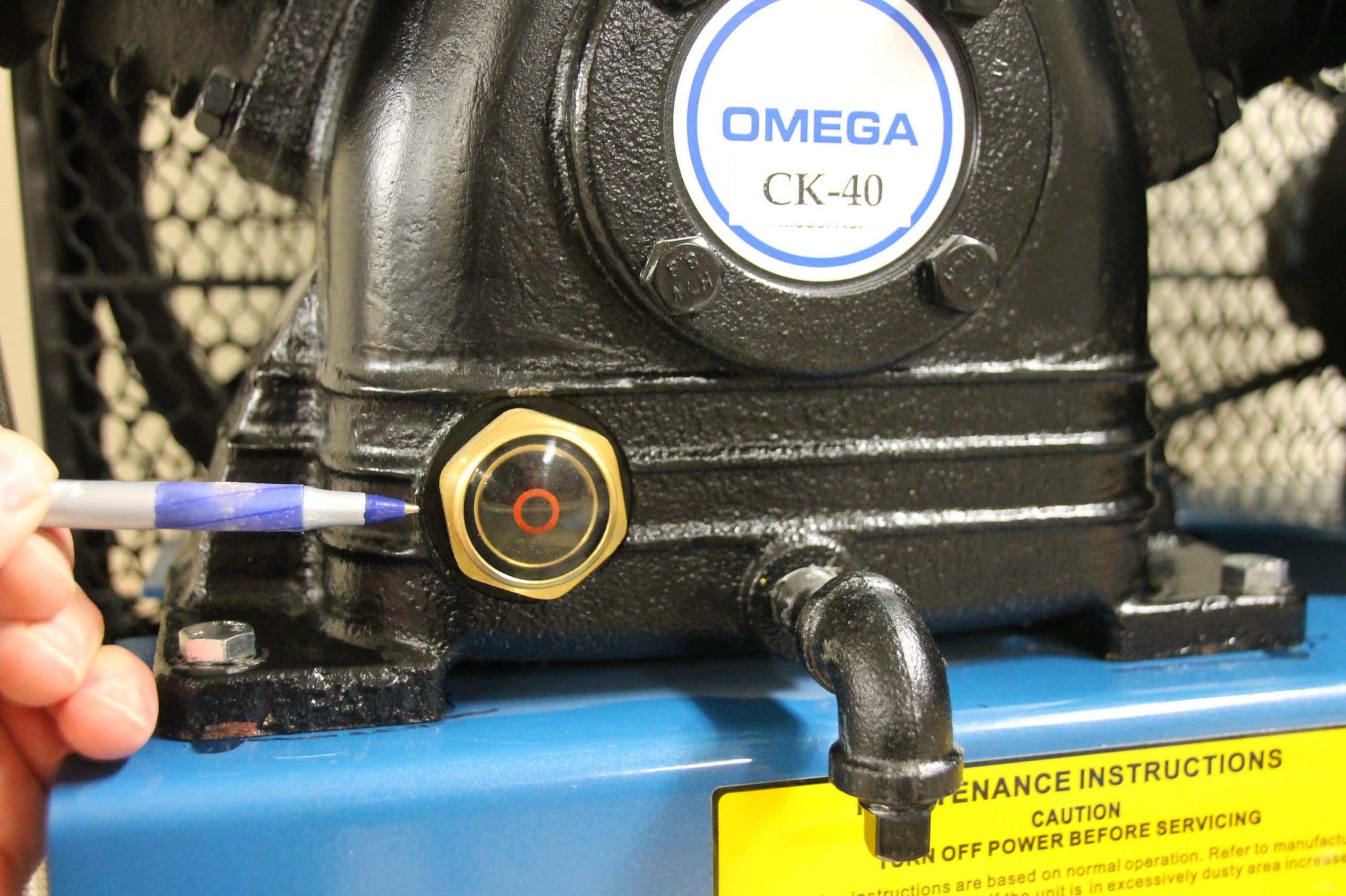
Checking pump oil level.
Daily Checks
Prior to starting up your compressor each day:
- Check the pump oil level.
- Drain condensation from the air receiver.
- Turn on your air compressor and check for any unusual noise or vibration.
- At the close of the day, drain your air tank. If you have installed an auto-drain system, this will not be necessary.
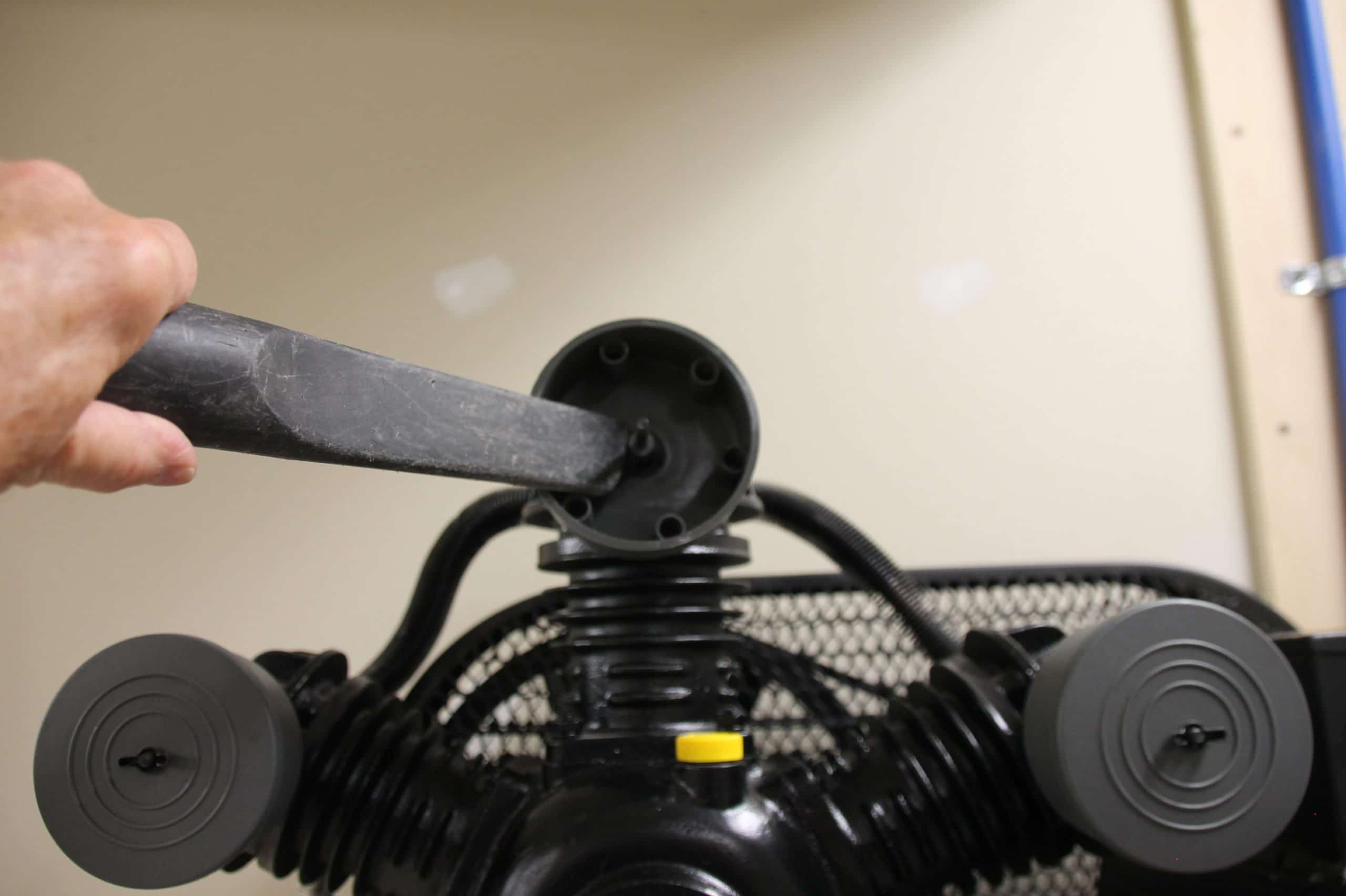
Checking pump oil level.
Weekly Checks
At the end of each week:
- Clean out the air filter by removing the air filter cap and vacuuming (do not blow with compressed air!) the inside. Clean or replace filters as necessary.
- Check the pump oil level and top up if necessary.
- If one is installed, confirm that the air tank auto-drain system is operating correctly.
- Check for air leaks and correct as necessary.
- Check the condition of your air line filters and clean them if necessary. Drain any condensate that may have collected in the water separator. If you have a desiccant system, check to see if the desiccant requires drying and do so if necessary.
- If your system has a refrigerated air dryer, check to ensure it is operating properly.
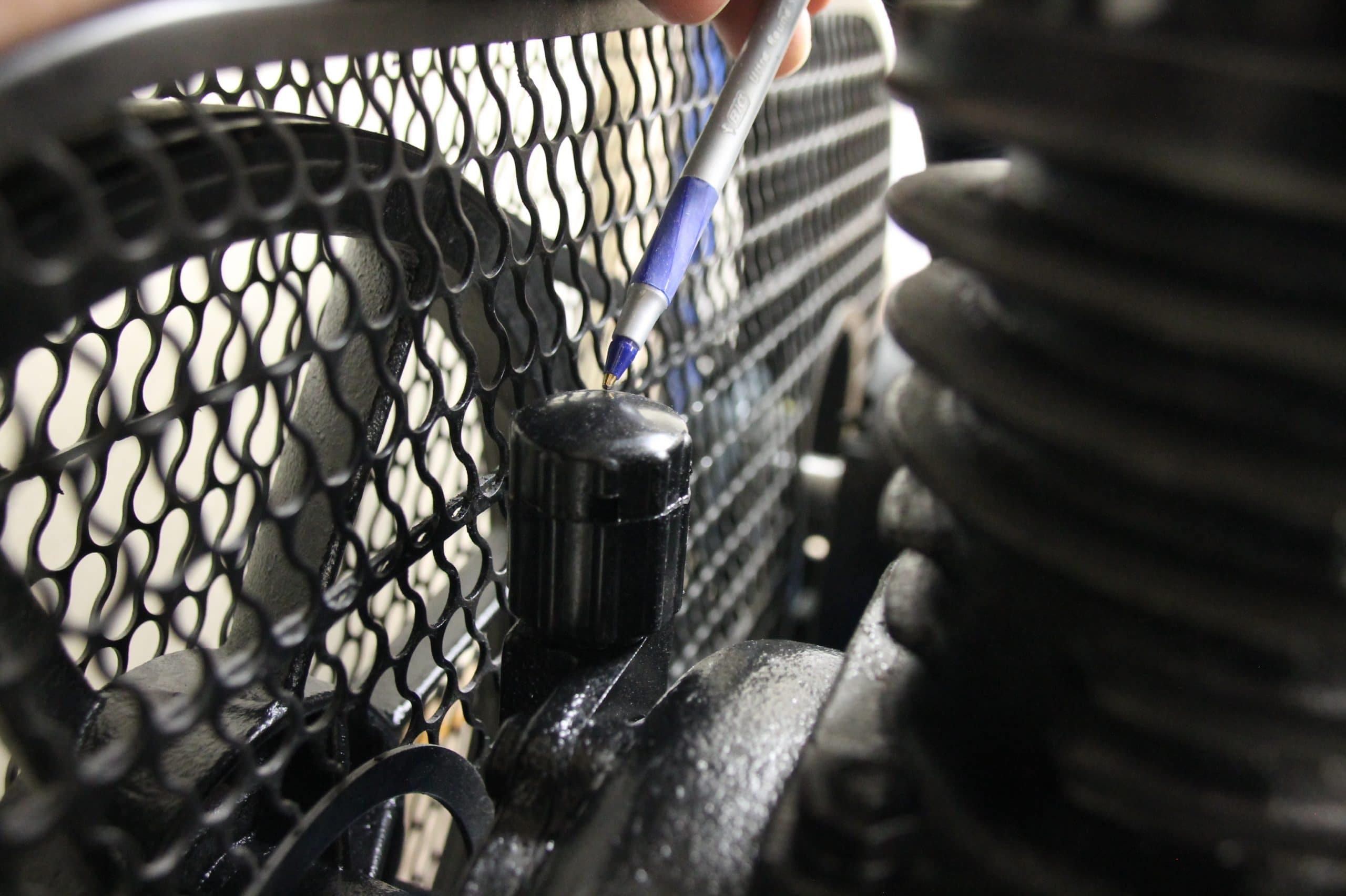
Vacuuming out crankcase breather (one per each cylinder).
Quarterly Checks
At the end of each quarter (or every 300 hours of operation, if that usually comes first):
- Change the pump oil and filter element.
- Check the condition and alignment of the belt, flywheel and motor pulley. Adjust belt tension if necessary and replace worn belts.
- Ensure the pump cooling fan is not cracked nor damaged.
- Check the crankcase breather and clean as necessary.
- Check the pressure switch unloader is operating correctly.
- Clean and blow off pump fins and motor.
- Inspect the air system for leaks by applying soapy water to all joints. Tighten joints if leakages are observed.
- Check that all electrical connections are tight, and wiring insulation is not cracked nor showing signs of wear.
Closing Remarks
If you’re regularly performing routine preventive maintenance checks, give yourself a pat on the back. If not, then you’ve got plenty of company. And that’s a shame, because a quality turbine or air compressor system is a significant investment which will degrade over time if checks aren’t being followed. And in the worse case scenario, the air compressor tank could explode with disastrous results. ‘Nuff said?
If you’d care to comment on this article or have other topics you’d like to see, feel free to let us know.


